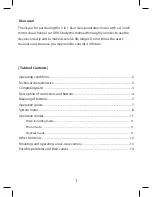
97
Compression
The process of reducing the size of a file using a predetermined method.
Conversely, the process of restoring compressed data is known variously
as, “decoding”, “unpacking”, “expansion”, “decompression”, or “extraction”.
Compression is necessary for saving or transmitting full color high resolution
image data as the file sizes become large.
There are two types of compression method: “Reversible compression”, in
which the image quality is not lost, and “non-reversible compression”, in which
the compression ratio can be dramatically increased in return for allowing a
certain amount of loss of image quality.
Crop
Selecting a range to be outputted in the case where only part of the file is to
be outputted rather than the whole file. Crop is also used to denote the se-
lected range.
FireWire
This is the nick name of the “IEEE1394” standard, which is a transmission
mode/protocol that connects a computer and a peripheral device.
Refer to “IEEE1394”.
Gamma value
The ratio of the change in image brightness and output voltage.
Where the gamma value is greater than 1, the image is darker than at the
time of input, and in the case of a gamma value less than 1, the image is
brighter than at the time of input.
Gradation
The degree of fineness refers to the slight changing gradation of color. It is
expressed in units of n bits, or n gradations. The higher the number of grada-
tions, the smoother the expression of color.
Histogram
A distribution graph of the image’s luminance.
The horizontal axis represents the level luminance, and the vertical axis rep-
resents the occurrence rate of each level luminance.
10_ZD back_E_p095-106
07/3/9, 20:44
97










































